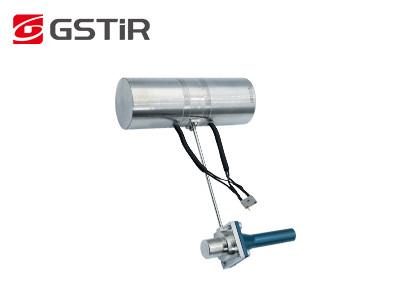



| Price | Negotiable |
| MOQ | 1 Piece |
| Delivery Time | Negotiable |
| Brand | GST |
| Place of Origin | Wuhan, Hubei Province, China |
| Certification | ISO9001:2015; RoHS; Reach |
| Model Number | LS734 |
| Payment Terms | L/C, T/T |
| Place of Origin | Wuhan, Hubei Province, China | Integration Method | IDDCA |
| Model Number | LS734 | Certification | ISO9001:2015; RoHS; Reach |
| Weight | ≤1.0kg | Max Power Consumption | 50W |
| Brand Name | GST | Payment Terms | L/C, T/T |
| Type | Linear Stirling Cryocooler | Price | Negotiable |
| Minimum Order Quantity | 1 Piece | Steady Power Consumption | ≤10W (430mW@77K@20℃) |
| MTTF | ≥20000hrs |
LS734 Linear Stirling Cryocooler for Cooling MCT Cooled Infrared Detector
LS734 linear stirling cryocooler adopts moving magnet linear motor, self-lubricating coating and other technologies to effectively improve its reliability and operating life. In addition, the compressor and dewar are connected by connecting pipes, which can realize a flexible layout in various application scenarios.
Fast
cooling,
wide
operating
temperature
range,
low
vibration,
low
noise,
high
reliability;
meet
the
needs
of
7*24H
long-time
operation
Gas
Leak
Monitoring,
Security
Monitoring
and
other
scenarios
that
require
long
time
operation
| Model | LS734 |
| Type | Linear Stirling Cryocooler |
| MTTF | ≥20000hrs |
| Maximum Size (mm) |
Compressor
Φ46×122 Expander Φ40×88 |
| Weight | ≤1.0kg |
| Cooling Power | (@77K@20℃)≥1300mW |
| Operating Temperature | -45℃~+71℃ |
| Storage Temperature | -55℃~+85℃ |
| Environmental Specification | GJB150A-2009 |
| Input Voltage | 24DC |
| Max Power Consumption | 50W |
| Steady Power Consumption | ≤10W (430mW@77K@20℃) |
| Cooling Time | ≤4min (450J@77K@20℃) |
| Cold Finger Dimension | Φ8mm |
| Electronics | Built-in |
| Integration Method | IDDCA |

1. What is thermal sensitivity?
Thermal Sensitivity, also named NETD (Noise Equivalent Temperature Difference), is a key parameter for evaluating medium wave (MWIR) and long wave (LWIR) thermal imaging cameras. It is directly related to the clarity measured by the thermal imager. It is a numerical value representing the signal-to-noise ratio of the temperature difference and measured in milliKelvins (mK). The smaller the thermal sensitivity value, the higher the sensitivity and the clearer the image.
2.
What
are
the
applications
of
thermal
imaging?
Temperature
measurement
and
all-weather
imaging
are
two
basic
functions
of
infrared
thermal
imaging
technology.
Products
developed
based
on
these
two
technologies
are
widely
used
in
security
&
monitoring,
UAV
payloads,
industrial
inspection,
firefighting,
predictive
maintenance,
ADAS,
epidemic
prevention,
AIoT
etc.